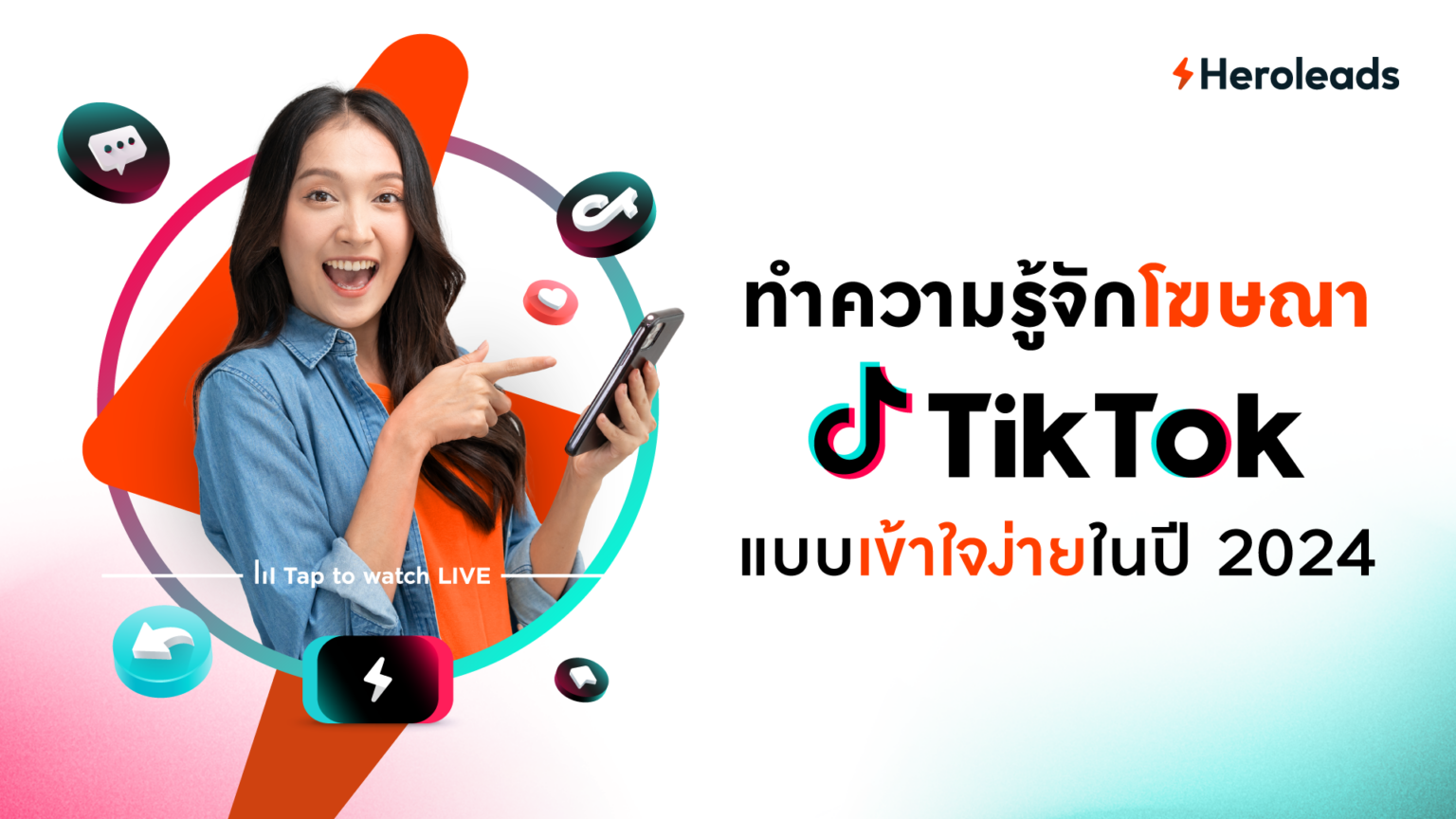เตรียมตัวบอกลา Third Party Cookies ในปี 2024

บทความน่าอ่าน
เตรียมตัวบอกลา Third Party Cookies ในปี 2024
อัปเดตล่าสุดสำหรับปี 2024 โปรแกรมเว็บเบราว์เซอร์ Google Chrome กำลังเปิดใช้ฟีเจอร์การป้องกันการติดตาม โดยทาง Google จะสุ่มผู้ใช้จำนวน 1% ที่ไม่นำ Third Party Cookies มาติดตามการใช้งานและวัดผลโฆษณา โดยเราคาดการณ์ว่าการเริ่มต้นนี้จะยังไม่มีผลต่อการทำการตลาดในระยะสั้น แต่ก็ไม่ได้หมายความว่าผู้ลงโฆษณาจะไม่ได้รับผลกระทบนี้เลย ดังนั้นเราจะต้องรับมือกับโลกที่ไม่มี Cookies อย่างไร? และต้องเตรียมความพร้อมอะไรบ้าง สำหรับข้อมูลที่จะหายไป เมื่อเลิกใช้ Third Party Cookies
สำหรับ 1% ข้างต้น จะส่งผลเพียง 63.6% จากผู้ใช้ Google Chrome ทั่วโลก (ข้อมูลจาก Statista) ซึ่งธุรกิจของคุณอาจจะไม่ได้รับผลกระทบเลยก็ได้ เพราะใน 1% ไม่ได้หมายความว่าจะเป็นกลุ่มลูกค้าของแบรนด์ทั้งหมด รวมถึงบางคนอาจจะใช้โปรแกรมบล็อกโฆษณาอยู่ก่อนแล้ว ทำให้ไม่เห็นการเปลี่ยนแปลงครั้งนี้มากนัก
โดยเราจะะเริ่มเห็นผลกระทบตั้งแต่ไตรมาสที่ 3 ของปี 2024 เมื่อ Third Party Cookies เลิกใช้ใน Chrome Browser อย่างสมบูรณ์ แต่ตอนนี้ก็ยังมีโฆษณาอีกหลายประเภทที่ไม่ได้รับผลกระทบ เช่น Social Platforms ที่ใช้ First Party หรือ Logged-In Data สำหรับการติดตามผู้ใช้งาน และมีผู้ลงโฆษณาหลายรายที่สร้าง Solutions ใหม่ขึ้นมา ไม่ว่าจะเป็น CAPI, Server-Side Tracking เพื่อการวัดผลโดยใช้ First Party Data แทน
การทำโฆษณาแบบ Programmatic จะได้รับผลกระทบมากที่สุด แต่นักการตลาดที่ทำโฆษณาประเภทนี้ ก็ไม่ได้ใช้ Cookies มานานแล้ว ตั้งแต่ Apple ออก iOS 14 หมายความว่าพวกเขายังสามารถใช้ประโยชน์จาก Solutions เดิมได้ โดยไม่ต้องให้ผู้ใช้ Logged-In เข้าระบบ
วิธีเตรียมตัวสำหรับนักการตลาดดิจิทัลบนโลกที่ไม่มี Cookies แล้ว
1. พยายามขอ Consent จากกลุ่มเป้าหมายของคุณ
เนื่องจาก First Party Data กลายเป็นสิ่งจำเป็นมากขึ้น จึงต้องตรวจสอบให้แน่ใจว่าระบบของคุณเหมาะสมพอที่ลูกค้าจะให้ความยินยอมในการเก็บข้อมูล แต่หากไม่มั่นใจ สามารถขอคำปรึกษาจากเราได้ที่นี่ เพื่อทำให้การใช้ First Party Data มีประสิทธิภาพมากขึ้น โดยทีมของคุณควรสร้าง Solutions ที่สร้างสรรค์และดึงดูด เพื่อกระตุ้นให้ลูกค้าอยากแบ่งปันข้อมูลของพวกเขา เช่น การทำแบบสอบถาม ฟีเจอร์ค้นหาสินค้า หรือแบบสำรวจ ที่ต้องให้ผู้ใช้ระบุอีเมลหรือหมายเลขโทรศัพท์เพื่อมีส่วนร่วมบนเว็บไซต์มากขึ้น ซึ่งคุณสามารถสร้างความสัมพันธ์ในระยะยาวโดยการรับข้อมูล First Party Data จากลูกค้า ผ่าน Royalty Program, Promotion หรือ VIP Experiences ได้ด้วย
2. สร้าง Data Pipeline ของคุณเอง
คุณสามารถสร้าง Data Infrastructure ที่แข็งแกร่งขึ้นมา พร้อมกับ tracking ทั่วทั้งเว็บไซต์ เพื่อให้แน่ใจว่าคุณสามารถเก็บข้อมูลได้ครบถ้วนทุกช่องทาง เมื่อสร้าง Infrastructure แล้ว ให้นำ First Party Data มาใช้ในการติดตามผู้ใช้และการวัดผล โดยการส่ง First Party Data ไปที่ Platform การทำการตลาด เพื่อจับคู่กับการแสดงโฆษณาแต่ละแบบ ซึ่ง Data Pipeline เหล่านี้อาจมีรูปแบบแตกต่างกัน ทั้ง CAPI, Enhanced Conversions, Offline Conversions และ GTM server-side tracking
3. ทดลองใช้เครื่องมือใหม่ ๆ เพื่อช่วยในการเก็บข้อมูล
ในปัจจุบันมีเทคโนโลยีใหม่เกิดขึ้นมากมาย เพื่อช่วยให้นักการตลาดเอาชนะความท้าทายใหม่ ๆ ที่เรากำลังเผชิญอยู่ ซึ่งตอนนี้ก็เป็นโอกาสของคุณแล้วที่จะทดสอบเครื่องมือเหล่านั้น เพื่อค้นหา Solutions ที่เหมาะสมกับแบรนด์ ก่อนที่ Cookies จะหายไปในไตรมาสที่ 3 นี้เครื่องมือสำคัญที่ควรนำมาทดลองใช้ ได้แก่
- Google Ads Data Manager: ที่เพิ่งเปิดตัวใหม่ไม่นานมานี้ เป็นวิธีการส่งต่อ First Party Data เข้าสู่ระบบ Google ซึ่งสามารถทดลองใช้อินเทอร์เฟซใหม่โดยเชื่อมต่อแหล่งข้อมูลบางส่วนของคุณ เพื่อดูว่าการ integrate นี้จะเป็นประโยชน์กับทีมของคุณหรือไม่
Google’s Privacy Sandbox:
เป็นเครื่องมือที่ Google กำลังสร้างขึ้นเพื่อรวบรวมผลิตภัณฑ์ต่าง ๆ เช่น PAIR สำหรับการติดตามผู้ใช้งาน และ Topics API สำหรับการติดตามผู้ใช้งานตามความสนใจโฆษณาในแบบ Programmatic โดยทีมของคุณสามารถลองใช้โซลูชันเหล่านี้ เพื่อเทียบกับกลุ่ม Audience ที่สร้างขึ้นด้วย Third Party Cookies
ดังนั้น การรักษาความสัมพันธ์กับ Partner ที่ให้ข้อมูล Third Party Cookies กับเราถือเป็นเรื่องสำคัญอย่างมาก เพราะจะช่วยคุณเข้าถึงข้อมูลกลุ่มเป้าหมายได้โดยไม่ต้องพึ่งพากลไกการติดตามผู้ใช้ แต่ใช้การระบุตัวตนด้วยวิธีอื่น ๆ แทน เช่น Universal IDs, Contextual Signals, IFA IDs และอื่น ๆ ซึ่งมีความแม่นยำและเข้าถึงกลุ่มเป้าหมายได้อย่างมีประสิทธิภาพ
4. นำโซลูชันที่ปกป้องความเป็นส่วนตัวมาใช้มากขึ้น
เช่น การใช้ Incrementality Testing และ Media Mix Modeling ซึ่งทำให้แบรนด์ไม่ต้องพึ่งพาการใช้ Cookies และมีประสิทธิภาพที่แม่นยำมากขึ้น เมื่อเทียบกับ Attribution
ยกตัวอย่างการใช้ประโยชน์จาก Household-Level Graphs สำหรับเพิ่มประสิทธิภาพการเก็บข้อมูลที่อาจสูญหาย รวมถึงการใช้ Brand Lift เพื่อติดตาม Brand Sentiment อย่างเหมาะสม เพราะในยุคนี้ ผู้บริโภคใช้แพลตฟอร์มต่าง ๆ มากมาย ตั้งแต่แอปมือถือไปจนถึง Connected TV (CTV) โดยไม่ต้องพึ่งพา Cookies แล้ว
นอกจากนี้ ยังสามารถใช้ Data Clean Room เพื่อวัด Customer Journey ของผู้ใช้ในขณะที่กำลัง Logged-In เข้าสู่ระบบ ซึ่งสามารถเก็บข้อมูลเชิงลึกที่มีประโยชน์ต่อการทำการตลาดของคุณได้ เช่น Time to Conversion, Frequency Capping, Reach Overlap และอื่น ๆ บนแพลตฟอร์มที่อนุญาตให้แบรนด์จับคู่ข้อมูลของ First Party Data กับการคลิกโฆษณา การแสดงโฆษณา และการมีส่วนร่วมที่ถูกวัดผล เช่น Google Ads Data Hub, Meta’s Advanced Analytics, Amazon Marketing Cloud เป็นต้น
อนาคตที่ไร้ Cookies อาจดีกว่าสำหรับแบรนด์ของคุณ
เส้นทางของแต่ละธุรกิจในการวัดผลโดยไม่ใช้ Cookies ในอนาคตนั้นจะแตกต่างกันไป ขึ้นอยู่กับข้อมูลที่ต้องการและกำลังรวบรวมในปัจจุบัน ซึ่งคุณควรคิดนอกกรอบและหลุดออกจากระบบข้อมูลที่เคยใช้ในอดีต เพื่อมองหา Solutions ที่ดีกว่า ดังนั้นการติดตามโฆษณาบนเว็บไซต์โดยใช้ Third Party Cookies จึงไม่ได้เป็นการวัดผลที่สมบูรณ์แบบ 100% การกำหนด Attribution ผ่าน Cookies อาจจะทำได้ง่ายกว่า แต่ก็ไม่ได้มีความแม่นยำเท่ากับการรวบรวม First Party Data
แม้ว่าจะเป็นการเปลี่ยนแปลงครั้งใหญ่ แต่การหายไปของ Third Party Cookies ไม่ได้มีแต่ข้อเสียทั้งหมด เพราะทำให้นักการตลาดได้มีโอกาสมองหาวิธีการเก็บข้อมูลให้แม่นยำ น่าเชื่อถือ และครอบคลุมทุกช่องทางได้มากขึ้น ดังนั้นหากคุณยังไม่ได้เริ่มต้นใช้ Post-Cookies Solutions ก็ถึงเวลาแล้วที่เราจะเริ่มต้นเรียนรู้ได้ตั้งแต่วันนี้ เพื่อให้มั่นใจว่าธุรกิจของคุณจะยังเติบโตและพัฒนาต่อไปได้ในอนาคต
หากแบรนด์หรือธุรกิจไหนสนใจการตลาดดิจิทัลและรายละเอียดเกี่ยวกับ Cookies เพิ่มเติม สามารถติดต่อมาได้ที่ https://heroleads.asia/ หรือโทร. 02-038-5220 เราเป็น Premier Partner กับทาง Google ที่มีทีมผู้เชี่ยวชาญพร้อมให้คำปรึกษาคุณอย่างเต็มที่ เพื่อให้ทุกธุรกิจเติบโตอย่างยั่งยืนและก้าวสู่ความสำเร็จไปพร้อมกัน
คำอธิบายเพิ่มเติม
• Incrementality Testing: วิธีการวัดผลแคมเปญทางการตลาดโดยแยกเป็น 2 กลุ่ม คือกลุ่มที่เห็นโฆษณาของแบรนด์ (Test Group) และกลุ่มที่ไม่เห็นโฆษณา (Control Group) โดยจะนำผลลัพธ์ที่ได้มาประกอบการตัดสินใจว่าแคมเปญที่สร้างขึ้น มีผลกระทบต่อผู้คนในหรือไม่
• Media Mix Modeling: เทคนิคทางสถิติที่ช่วยให้คุณเข้าใจว่าช่องทางการตลาดต่าง ๆ เช่น ทีวี วิทยุ และสื่อดิจิทัล ส่งผลต่อผลลัพธ์ทางธุรกิจของคุณอย่างไร
• Household-Level Graphs: การแสดงความสัมพันธ์ระหว่างผู้ใช้งานกับอุปกรณ์ต่าง ๆ เช่น โทรทัศน์ สมาร์ตโฟน คอมพิวเตอร์ ฯลฯ โดยวัดตามจำนวนครัวเรือน ซึ่งข้อมูลเหล่านี้สามารถนำมาปรับปรุงการกำหนดเป้าหมายของโฆษณา โดยไม่ต้องติดตามผู้ใช้รายบุคคล
• Brand Lift: การวัดผลกระทบของแคมเปญการตลาดต่อการรับรู้ อารมณ์ และการพิจารณาแบรนด์ของคุณ วิธีนี้มักใช้สำรวจความคิดเห็นของผู้บริโภค โดยไม่ต้องติดตามผู้ใช้รายบุคคลเช่นกัน
• Data Clean Rooms: สภาพแวดล้อมที่ปลอดภัยสำหรับการแชร์ First Party Data กับพันธมิตรทางธุรกิจ โดยไม่ต้องเปิดเผยข้อมูลส่วนตัวของผู้ใช้




